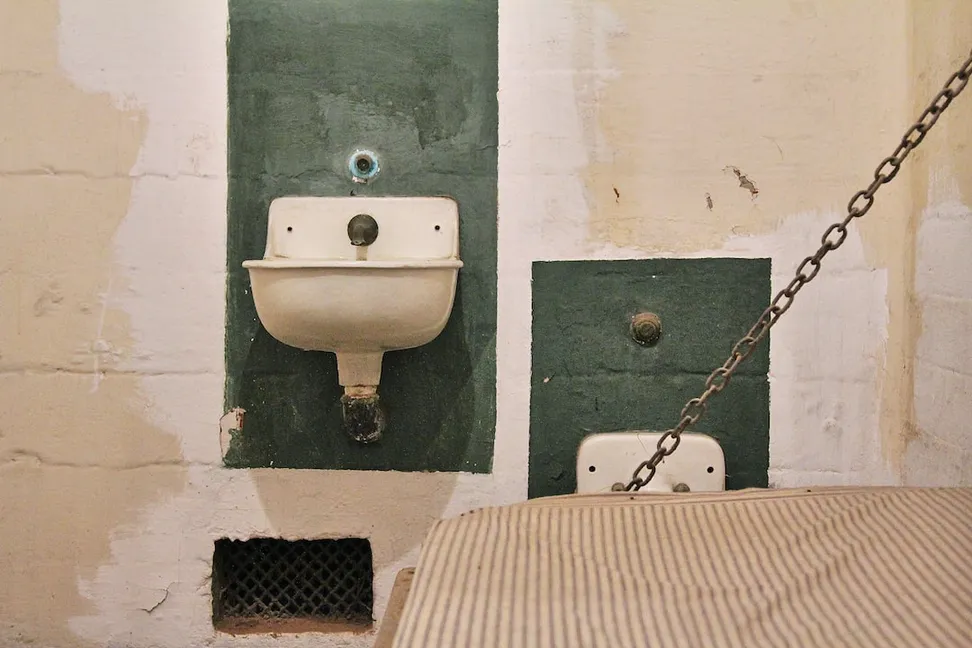Installing a sprayer to your kitchen sink can be a great way to make your kitchen more efficient and convenient. You can quickly rinse dishes, clean countertops, and even water plants with a sprayer.
So, you may wonder, can I add a sprayer to my kitchen sink? Don’t worry; installing a sprayer is a relatively simple process and can usually be done in just a few steps.
This guide will provide step-by-step instructions on attaching a sprayer to your kitchen sink.
Can I Add A Sprayer To My Kitchen Sink?
Adding a sprayer to your kitchen sink can be a great way to make washing dishes and cleaning up much easier. Whether you have a single or double sink, attaching a sprayer to your kitchen sink is a relatively straightforward process that can be done in a few simple steps.
The first step is to purchase a sprayer that fits your sink. You can find sprayers in various styles and finishes to match your kitchen’s décor. Make sure the sprayer you choose includes all the necessary parts for installation, such as a hose, mounting hardware, and a shut-off valve. Once you’ve purchased your sprayer, you can begin the installation process.
Start by turning off the water supply to the sink and disconnecting the existing faucet. You’ll then need to remove the old faucet. Depending on your sink, this may require a wrench, screwdriver, or other tools. Once the faucet is removed, you can begin to install the sprayer.
Attach the mounting hardware to the sink and connect the flexible hose to the sprayer. Once the hose is connected, you can attach the sprayer to the mounting hardware. Make sure you tighten the screws and secure the sprayer in place. After that, you must attach the shut-off valve to the water supply line.
Once the valve is attached, you can turn the water supply back on. Test the sprayer by turning it on and off and ensuring the water flows properly. If everything is working correctly, you can attach the aerator to the end of the sprayer.
Attaching a sprayer to your kitchen sink is a relatively simple process and can be done quickly. Be sure to purchase a quality sprayer and follow the directions included in the product. With a few basic tools and a little patience, you’ll have a new sprayer in no time!

Gather Supplies
Before attaching a sprayer to your kitchen sink, you’ll need a few tools, including an adjustable wrench, a basin wrench, a pair of pliers, and a Phillips head screwdriver.
Additionally, you’ll need a supply tube, a gasket, a compression nut, and a sprayer. Once you have these items, you can attach the sprayer to your sink.
Sink Sprayer Connection Types
Sink sprayer connection types are an important factor to consider when attaching a sprayer to your kitchen sink. There are three main types of connections: direct, hose, and diverter valve.
- Direct connection is the most commonly used type and generally involves a simple adapter that connects the sprayer head directly to the faucet. This type of connection is usually the easiest to install and maintain and the most reliable.
- A hose connection is another popular option and is often used when the sink does not have a direct connection. This type of connection uses a flexible hose that connects the sprayer head to the faucet, allowing for a greater range of motion. While this type of connection is more difficult to install, it is often more reliable than a direct connection.
- The diverter valve connection is the type of connection used when the sink does not have a direct or hose connection. It utilizes a diverter valve installed between the faucet and the sprayer head. This type of connection is the most difficult to install and maintain but also the most reliable.
Regardless of the type of connection chosen, it is important to ensure that all connections are properly tightened and that the sprayer head is securely attached to the faucet. This will not only help prevent leaks but also help ensure the sprayer’s optimal performance. Once the connections are made, testing the sprayer head is a good idea to ensure it is operating correctly. If any problems are identified, it is important to address them as soon as possible to prevent further damage or malfunctions.
How To Add A Sprayer To An Existing Faucet?
The first step to adding a sprayer to your existing faucet is to purchase the necessary components. You’ll need a sprayer hose, a diverter, a sprayer head, and other necessary parts. Most kits include all of the parts you need. Once you have your supplies, disconnect the existing faucet from the water line and remove the old handle.
Next, you’ll need to install the diverter onto the faucet. The diverter allows you to switch between the faucet and the sprayer. Once the diverter is installed, you can attach the sprayer hose and head. The sprayer head should be tightened securely to the end of the hose.
Finally, you must ensure the sprayer is securely connected to the water line. To do this, you should use a wrench to attach the sprayer to the water line securely. Once the sprayer is in place, you can turn on the water and test out the sprayer. Ensure that the sprayer is working properly and that there are no leaks.

How To Add Diverter To Kitchen Faucet?
First, the diverter should be screwed onto the faucet. This is usually done with a screwdriver. To ensure the diverter is in the correct spot, you may need to measure the distance between the faucet and the diverter. Once the diverter is in place, the sprayer hose can be connected. This is done by screwing the hose onto the diverter. Make sure the hose is tightly secured and won’t come loose.
Next, the sprayer nozzle must be attached to the end of the hose. This is also done by screwing it into place. Make sure the nozzle is also tightly secured before turning on the water.
Finally, the sprayer should be tested to ensure it works properly. To do this, turn on the water and check that the water is spraying out of the nozzle. If it is, the sprayer is now ready to use.
Universal Faucet Sprayer Attachment
The universal faucet sprayer attachment is designed to fit most standard kitchen faucets and is easy to install. You only need a wrench and a few minutes to get your sprayer up and running. Simply unscrew the aerator from the faucet and attach the universal faucet sprayer. This is a simple process and can be completed in minutes.
Next, connect the sprayer to your sink’s water supply lines. This is also a simple process and requires no tools. Simply attach the two hoses to the corresponding valves on the underside of the sink. Once the hoses are connected, you can turn the water on and test the sprayer to ensure it works properly.
Finally, you will need to attach the nozzle to the sprayer. This is done by unscrewing the nozzle from the sprayer and then screwing it back in place. Once the nozzle is securely attached, you can use your new sprayer.
Side Sprayer For Kitchen Sink
Installing a side sprayer on your kitchen sink can be a great way to make cleaning messes much easier. This inexpensive and relatively easy DIY project will not take long to complete. With a few simple supplies and a little time, you can install a side sprayer in no time.
Before starting, ensure you have all the supplies you need for the project. These include a sprayer assembly, a water supply line, a shut-off valve, PEX tubing, and a screwdriver. You will also need pliers, a wrench, and a drill with a hole saw attachment.
First, you must shut off the water supply to the sink. Once it is off, you must disconnect the current water line from the faucet. Then, attach the PEX tubing to the shut-off valve and the water supply line. Run the PEX tubing through the hole in the sink and connect it to the sprayer assembly.
Connect the water supply line to the shut-off valve once the PEX tubing is attached to the sprayer. This will ensure that the water supply is connected to the sprayer. Then, you will need to secure the sprayer to the sink. To do this, use the screwdriver and drill to attach the sprayer to the sink.
Finally, turn the water supply back on and test the sprayer. Ensure the water flows properly and the sprayer is securely attached to the sink. If all is working properly, you are done!

Detachable Kitchen Sink Sprayer
Attaching a sprayer to your kitchen sink can be a great way to make cleaning dishes and other kitchen tasks much easier. It can also be a great way to save money on buying a new sink. If you have an older kitchen sink that doesn’t have a sprayer, you can easily install one yourself.
- The first step is to purchase a detachable kitchen sink sprayer. This type of sprayer is designed to fit all standard kitchen sink faucets and comes with all the hardware you need to attach it. Choosing the right sprayer for your sink faucet is important, as some may not fit properly or be compatible with the existing hardware. Once you have the correct sprayer, you can begin the installation process.
- The next step is removing the sink faucet and unscrewing the mounting nuts. You may need a wrench or pliers to get the nuts off. Once the nuts are off, you can attach the sprayer to the sink using the included hardware. Make sure to tighten the connections securely.
- You must attach the sprayer hose to the water supply. This is typically done by unscrewing the existing water supply line and attaching the hose. You may need pliers or a wrench to get the hose on the line. Once it is in place, you can attach the sprayer head to the hose.
- Finally, you must attach the sprayer head to the faucet. This is done by screwing the head onto the faucet. Make sure to tighten the connection securely. Once the head is in place, you can turn on the water and test the sprayer.
Troubleshoot Common Sprayer Issues
When it comes to attaching a sprayer to your kitchen sink, it’s important to be aware of any potential issues that may arise.
A common issue is that the sprayer may start leaking. This can be due to a few things, but the most common are worn-out O-rings, gaskets, or a sprayer hose. To troubleshoot this issue, start by examining the O-rings and gaskets. If they look worn, you should replace them with new ones.
You should also check the sprayer hose for any kinks, tears, or signs of wear. If the hose looks damaged, replace it with a new one.
Next, you should check the connections between the sprayer and the sink. Make sure all of the connections are properly secured and that there are no signs of leakage. If you notice any signs of leakage, you should tighten the connections or replace the gaskets.
Finally, you should check the connection between the sprayer and the water supply line. If the connections are loose, you should tighten them. If the connections are damaged, you should replace them. You should also check for any signs of leakage, and if you find any, you should replace the connections or the water supply line.
Tips For Installing A Sprayer
Installing a sprayer to your kitchen sink is not as daunting as it might seem. With the right tools and a few simple steps, you can do it yourself in no time. Here are a few tips to help you with the installation process:
- Choose the right sprayer: Make sure to select a sprayer that is compatible with your sink and the existing plumbing. Look for a sprayer that comes with all the necessary parts for installation.
- Turn off the water supply: To avoid any potential water damage, turn off the water supply to your kitchen sink before installing the sprayer.
- Remove the old faucet: Before installing the sprayer, you’ll need to remove the old faucet. Use a wrench to loosen and remove the nuts and bolts holding the faucet in place.
- Install the sprayer: Follow the manufacturer’s instructions to install the sprayer. Typically, this involves attaching the sprayer hose to the faucet and installing the sprayer holder and the sprayer itself.
- Test the sprayer: Once the sprayer is installed, turn the water supply back on and test the sprayer to make sure it’s working properly. If there are leaks, tighten the connections or replace faulty parts.
Following these tips, you can install a sprayer in your kitchen sink and enjoy the benefits of easy cleaning and dishwashing.
Maintain The Sprayer
Maintaining a sprayer attached to your kitchen sink is an important task that should not be overlooked. A poorly maintained sprayer can cause many problems and damage to your sink and other items around it. To ensure that your sprayer is working properly, it is important to follow a few simple steps to maintain it.
- The first step to maintaining your sprayer is to ensure it is properly connected to the water supply. It is important to ensure the connection is secure and the supply line is free of debris or blockages. Once the connection is secure, you should also ensure that the hose is not kinked or twisted. This can cause the sprayer to malfunction and may lead to leaking.
- You should check the sprayer head once the connection is secure and the hose is not kinked. This is part of the sprayer that is responsible for the water flow. It should be properly installed, and the nozzle should be in good condition. If there is any damage, you should immediately replace the parts.
- The next step to maintaining your sprayer is to check the water pressure. The pressure should be set to the correct level for optimal performance. You should also check the filter. If the filter is clogged, it can cause the sprayer to malfunction and could lead to leaks.
- Finally, you should check the sprayer head for any leaks. If you notice any leaks, you should immediately repair them. If the leaks are too severe, you may need to replace the sprayer head.
Conclusion
In conclusion, attaching a sprayer to a kitchen sink is a relatively simple process. It can be done with minimal effort with the right supplies and a few steps. It is important to ensure that the water supply is securely attached and to follow the instructions provided with the specific sprayer model. Doing this will ensure that your kitchen sink is equipped with a durable and reliable sprayer attachment.
Frequently Asked Questions:
Can you add a hand sprayer to an existing faucet?
Yes, adding a hand sprayer to an existing faucet is possible. However, it is recommended that you consult a plumber to ensure that the installation is done correctly.
How do you install a spray nozzle on a sink?
Install a spray nozzle on a sink, turn off the water supply, and remove the existing faucet aerator. Insert the new spray nozzle and connect the hose to the water supply. Test the nozzle for leaks and tighten connections if needed. The process requires basic plumbing tools and patience.
How do you attach a hose to a kitchen sink sprayer?
To attach a hose to a kitchen sink sprayer, you must remove the aerator from the end of the sprayer. Then, attach the hose to the threaded port on the sprayer. Finally, replace the aerator. Make sure to use thread-sealing tape to ensure a tight seal.
What type of sprayer is best for a kitchen sink?
The best type of sprayer for a kitchen sink is a pull-down sprayer. This sprayer is easy to use, provides a powerful spray of water, and is adjustable so you can customize the amount and angle of the spray.
How do I know if my sink is compatible with a sprayer?
To find out if your sink is compatible with a sprayer, you’ll need to check the specifications of your sink to determine if it has a pre-drilled hole for the sprayer. If there isn’t a pre-drilled hole, you may need one installed. Additionally, you’ll need to check to make sure the sprayer you’re interested in is the correct size and type for the sink you have.
How much maintenance is required for a kitchen sink sprayer?
The maintenance required for a kitchen sink sprayer depends on how often it is used and how well it is taken care of. Generally, it is recommended to check the sprayer at least once a month to ensure it works properly and to clean it regularly with mild detergent and warm water. Additionally, it is important to replace the sprayer’s rubber seal regularly to prevent leaks.
What type of plumbing connections are necessary for installing a kitchen sink sprayer?
The plumbing connections necessary for installing a kitchen sink sprayer are typically a flexible supply line, an adapter for the hose, a 1/2-inch male threaded connection, and a 1/4-inch female threaded connection.
